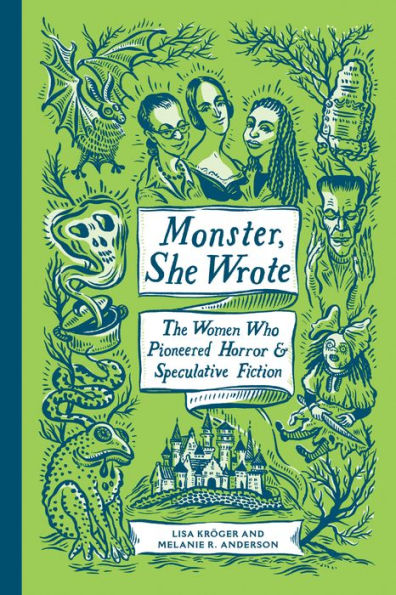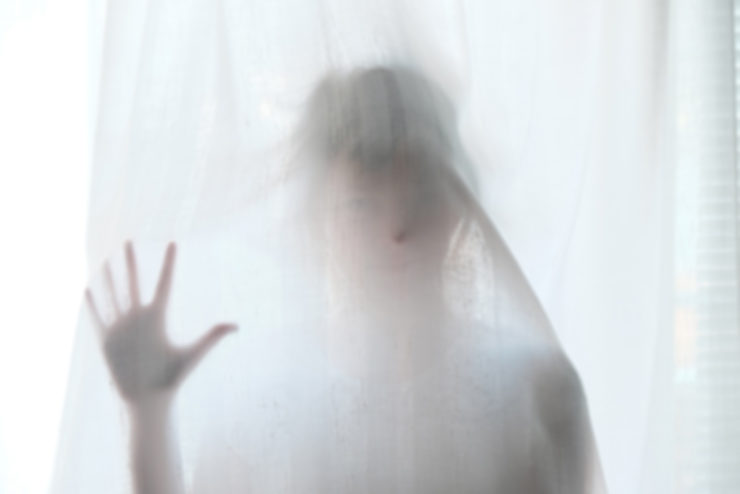Ghost stories have been with us for thousands of years. The oldest ones, dating back to The Epic of Gilgamesh, included tales of monsters and spirit beings in the underworld, ghosts who held secrets for the living.
Spectrality plays with our beliefs about time. We like to think that past, present, and future are separate from each other, but they’re interconnected. When something happens in the past, it isn’t just over and done with. Tragic events from the past still resonate in the present, which is why certain places enter into local folklore or become historical sites. After suffering a deep loss, people can become engulfed with grief and memories of a loved one. Guilt follows people to their graves. We live in a layered continuum of time, and ghost stories make this explicit. Ghosts signal memories that won’t go away; they signal the guilt of culprits or survivors; they signal an eruption of the past into our present and the dead’s future as we watch a spirit repeatedly go through the motions of a last act.
Need proof? Think of the most popular folktales and legends. The Tower of London is haunted by Anne Boleyn. Every major city in America has a ghost tour, full of stories of buildings haunted by past inhabitants. The ghosts in these stories are usually victims, whether of murder, an untimely death, or past abuse. The specters we see repeatedly are reminders of the things that we can’t yet face, but they keep materializing in front of us, especially when we try to ignore them.
Throughout the history of horror fiction, in all its phases, women have been drawn to the ghost story, and they didn’t need a haunted house for these specters. They did have, however, real life reasons why these hauntings might be occurring in their pages.
The earliest ghost stories are pretty straightforward haunting fare. These ghosts usually have a message. Missing those pesky papers stipulating who inherits the grand family fortune? No need to worry. Grandfather’s ghost is waiting, ready to point to the exact place in the Gothic manor where those papers were hidden. If it’s snowing outside on Christmas, then there’s probably the ghost of a little Victorian child, crying to get in. But sometimes, even the simplest of these stories are hiding deeper meanings. Take, as an example, Elizabeth Gaskell’s “The Old Nurse’s Story.” Gaskell’s tale is a classic ghost story about a young girl who is haunted (nearly to death) by the ghost of a little girl who was turned away in her time of need. It’s a moody, Gothic story, but the meaning is clear: past deeds never remain in the past. The deadly neglect of the ghostly child and her mother will continue to haunt the family home.
Margaret Oliphant’s “The Open Door” and “The Library Window” are two stories that exemplify the potential of ghosts to be more than just the dead coming back to speak to the living. Oliphant was one of the most prolific and popular writers of ghostly tales during the nineteenth century. Her ghosts, though they may have met violent deaths, were less concerned with solving their murder or finding vengeance than they were with mirroring the mindsets of their witnesses. In “The Library Window,” the narrator sees what she thinks is a scholarly man in a window, but no one else is quite convinced. The man was apparently killed by his lover’s brother, but the potential murder is almost an afterthought in this story. When the narrator sees the ghost again in her later life, it is less a terrifying moment than it is a reflection of her own profound loneliness. Oliphant’s “The Open Door” is a more traditional ghost story, with a ghost who refuses to be silent even in death, but the ending is more ambiguous, as only a few of the characters even acknowledge that a ghost is present at all. The present can’t move on without an acknowledgment of the past.
Buy the Book


Monster, She Wrote: The Women Who Pioneered Horror and Speculative Fiction
Edith Wharton may be known for her realist works like Ethan Frome and The Age of Innocence, but she published supernatural fare as well. In “Afterward,” an American couple, Ned and Mary Boyne, buy an English estate with their new fortune. Their one deal-breaker during the house hunt is that it must be haunted. And it is, but not by the charming ghosts they expect. The Boynes bring their own ghost with them, and Mary realizes that she knows very little about her spouse, especially his business deals. Sadly, the appearance of the ghost and the disappearance of her husband uncover all the secrets Ned hid from his wife.
These classic ghost stories continue in this new millennium, though they shift in the hands of the new masters. Kelly Link’s “Stone Animals” is a haunted house story with barely a mention of a ghost. Even the word “haunted” is omitted from the opening lines: “Henry asked a question. He was joking.” From the real estate agent’s annoyed response, the reader can infer that the question was “Is the house haunted?” The story may not deliver a fully realized specter begging to get in like in Gaskell’s story, but it does create an oppressive domestic environment and an increasing sense of dread. The big suburban house—bought at a bargain—should be a dream home, but everything seems just slightly off. While unpacking, the mother puts a gas mask under the kitchen sink. Rabbits populate the lawn, simultaneously seeming cute and sinister. Everyday objects, like toothbrushes, become too haunted to touch.
Carmen Maria Machado’s “Especially Heinous,” from her 2017 collection Her Body and Other Parties, satirizes Law and Order: SVU and merges it with the supernatural. The ghosts of women and children whose deaths are unsolved, catalogued without names or careful investigation, haunt Benson, one of the main investigators. They chant, “Give us voices. Give us voices. Give us voices.” Throughout the story, women who are victims of violence are dismissed as prostitutes or disorderly characters. Women cannot make decisions without taking into account their fear of men, and they cannot control when or how their stories are told. Machado’s satirical look at a police procedural leads to questions: Who is granted visibility? Who receives justice in our society? Who are the real monsters?
And all of the best ghost stories leave us with the greater question: What makes a ghost?
Photo: Steinar Engeland [via Unsplash]
Lisa Kröger holds a PhD in English. Her short fiction has appeared in Cemetery Dance magazine and Lost Highways: Dark Fictions from the Road (Crystal Lake Publishing, 2018). She’s an adjunct instructor of English at the University of Southern Mississippi, Gulf Coast. She cohosts The Know Fear Cast (knowfearcast.com) with Melanie R. Anderson.
Melanie R. Anderson is an assistant professor of English at Delta State University in Cleveland, Mississippi. Her book Spectrality in the Novels of Toni Morrison (University of Tennessee Press, 2013) was a winner of the 2014 South Central MLA Book Prize.










